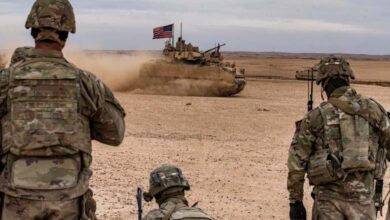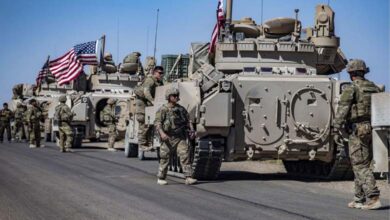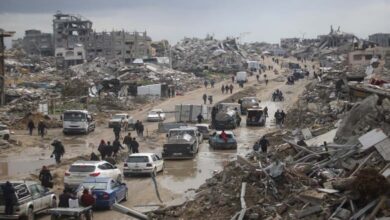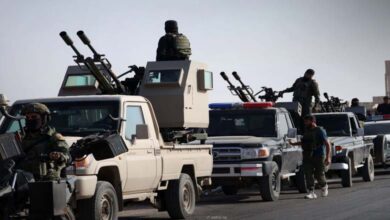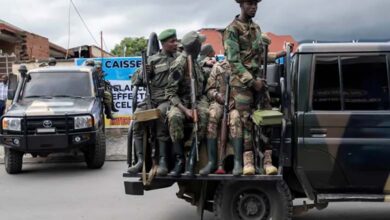Fake messages.. Iranian boats threaten a US ship in the Strait of Hormuz.. What does Tehran want?

In an act that reflects Iranian recklessness and the desire to escalate and plunge the region into a spiral of violence, three Iranian boats belonging to the Iranian Revolutionary Guard chased two American Navy ships in the Strait of Hormuz last Monday. The American Navy said in a statement that the chase was conducted in an “unsafe and unprofessional manner”. It was described in a statement by the American Navy, where it confirmed that one of the fast attack boats belonging to the Iranian Revolutionary Guard had set off towards the USS Sirocco, an American Navy patrol ship, “at a dangerously high speed”. It did not change its course until the American ship issued an audible warning.
Iranian escalation
The Central Command of the Navy confirmed in its statement that the fast attack boat of the Iranian Revolutionary Guard reached a distance of 50 yards from the American ship, which prompted Sirocco to fire a warning flame. According to the US Cable News Network, The USS Sirocco was operating in international waters in the region with the USNS Choctaw County, an expeditionary transport vessel. According to the statement, the incident lasted approximately one hour and ended when Iranian boats left the area.
Tehran’s fake letters
Dr. Mohammed Mohsen Abu al-Nour, head of the Arab Forum for Iranian Policy Analysis, said Iran is trying to harass its Revolutionary Guard boats with American troops in the Strait of Hormuz by sending messages to the United States, but these are untrue.
Abu Al-Nour added that these messages are that Iran wants to say that it is ready for a military confrontation with the United States of America, and that it has a high readiness to attack, not just defend, in light of the failure of negotiations that were taking place in the Austrian capital, Vienna, on the Iranian nuclear agreement. He added that Iran wishes to say that it wants to raise the level of escalation with the United States in that region in response to America’s slowness in signing a draft agreement on Iranian terms.
The head of the Arab Forum for the Analysis of Iranian Policies explained that, in the end, the region might witness intense tension because of the lack of agreement in Vienna, especially since any tension in Vienna reflects on the conflict fields, especially the Strait of Hormuz and the Sea of Oman, areas where American navigation and American military patrols are active. He pointed out that Iran has taken from two islands close to the Strait places for training human frogs and rapid deployment forces that are active in the boats belonging to the Revolutionary Guard, and that tension might activate until the completion of the agreement in Vienna.


